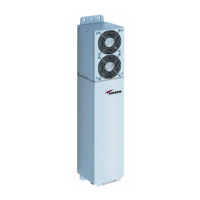
Do you have a question about the CommScope ION-M80 and is the answer not in the manual?
| Product Type | Power Distribution Unit |
|---|---|
| Input Frequency | 50/60 Hz |
| Number of Outputs/Outlets | 8 |
| Rack Height | 1U |
| Mounting | Rack Mount |
| Communication Ports | Ethernet |
| Operating Humidity | 5% – 95%, non-condensing |
List of common abbreviations used in the manual.
Critical safety precautions, warnings, and guidelines for operating the unit.
Information about the manufacturer and its capabilities.
Contact details for technical support and customer service worldwide.
Explains the function and application of the optical distribution system.
Details the specific features and capabilities of the ION-M80/90/19P unit.
Lists and describes the key components of the remote unit.
Describes the optional fan protection kit for outdoor installations.
Information on additional accessories available for the remote unit.
Guidelines and procedures for physically installing the remote unit.
General considerations and precautions for mechanical installation.
Step-by-step instructions for mounting the unit on a wall.
Step-by-step instructions for mounting the unit on a pole.
Detailed steps for installing the fan protection kit.
Procedures and safety guidelines for electrical connections.
General advice and safety warnings for electrical installation.
Description of the unit's connectors and their functions.
Instructions for proper grounding of the unit.
Details on connecting AC or DC power supply to the unit.
Guidelines for connecting antenna cables to the unit.
Rules and parameters for connecting optical fiber cables.
Steps for cleaning fiber-optic connectors to ensure optimal performance.
Information about the protective plug for fiber-optic cable connections.
Details on the optional protective tube kit for fiber-optic cables.
Final steps and checks before putting the system into operation.
Overview of the Built-In Test (BITE) concept and alarm monitoring.
Procedures for acknowledging and managing alarms.
Reference to Master Unit software for detailed alarm status.
Explanation of status LED indications and potential on-site measures.
Description of external alarm connections and their pin assignments.
Guidance on diagnosing and resolving issues with the remote unit.
General guidelines and precautions for performing maintenance.
Step-by-step instructions for replacing the fan unit.
Procedures for cleaning the heat sink to maintain cooling efficiency.
Collection of diagrams and drawings related to installation.
Technical specifications of the remote unit.
Detailed electrical parameters of the unit.
Environmental operating conditions and safety compliance.
Physical dimensions and weight of the unit.
List of available spare parts and their identification numbers.